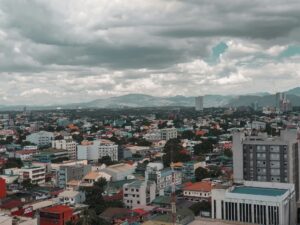An American Backslider in the Philippines
 Photo by REY MELVIN CARAAN on Unsplash
Photo by REY MELVIN CARAAN on Unsplash A new docu-drama will explore humanist and freethought activism in the Philippines. The film project combines historical recreations with insightful interviews from both secular and religious activists. It’s an attempt to spotlight an underrepresented movement in a country deeply rooted in religious traditions.
When I first visited the country, I was struck by its strong religious presence. There were John 3:16 signs plastered across highways, almost as if they were state-sponsored. In some ways, it was like stepping into a Christian Nationalist’s vision of America. However, there was a key difference—the Philippines religious culture, primarily Roman Catholic tradition, didn’t seem as hostile toward art and education as certain fundamentalist movements in the U.S.
The Philippines, like the United States, enshrines separation of church and state in its constitution. This was a revelation, especially since the country’s religious history is largely a story of conquest. When Spain colonized the Philippines, they brought Catholicism with them, and after the U.S. helped oust Spain, Protestantism began to spread. Left forgotten were the cultural roots of the original Filipinos which, I hope, is due for a re-awakening.
The indigenous mythology of the Philippines is rich and fascinating. One of the creation myths tells of a world covered in rain, with a seagull discovering a man and woman inside a bamboo stalk. Other bamboo stalks soon revealed different couples, each unique. While it’s clearly a myth, it avoids the common theological question of “Where did Cain get his wife?” in a more graceful way than many of the Judeo-Christian myths.
Also of interest is the social structure of the indigenous communities. Their leaders, the Babaylan, were often women or individuals we might describe today as transgender. Unlike in many Western religious traditions, women were not seen as subordinate to men.
The church deemed these beliefs heretical. The Spanish Inquisition reached into the Philippines. Natives were persecuted and their culture was almost destroyed. One indigenous hero, Lapu-Lapu, successfully resisted the Spanish. He killed Ferdinand Magellan in battle, delaying the Spanish conquest for nearly forty years.
Lapu-Lapu is celebrated as a national hero today, though his story is often overshadowed by colonial narratives. This disconnect from the indigenous past is slowly being bridged, especially by younger generations. In the arts and literature, Filipino myths and legends are gaining new life through books, tele-novellas, and graphic novels. Some young people are even embracing these myths in the way that certain Western youths have returned to paganism. Still, when I asked several young Filipinos about the future they envision, many said they want more technology and scientific advancement, which suggests that progress might take different forms than a cultural revival alone.
Science fiction is emerging as a growing genre, spearheaded by writers like Renato Tranquilino, who explores how space travel might impact the Philippines in his novels. Whether this signals a challenge to the nation’s religious foundations is unclear, but there are certainly advocates for more secular approaches to life.
Marissa Torres Langseth, founder of HAPI (Humanist Alliance of the Philippines, International), has stated that openly identifying as an atheist or skeptic can be career suicide in the country. However, there are exceptions. Bryan Boy, a popular Filipino blogger, came out as an atheist in 2022 without seeing his career as an IKEA spokesperson suffer.
Sadly, the influence of superstition is still evident in daily life. On one of my trips, I saw a heartbreaking example on a local newscast. A young girl found herself pregnant, but due to poverty and tradition, her family took her to a witch doctor instead of a medical professional. The witch doctor misdiagnosed her, saying she had a tumor. Eventually, the girl was taken to a legitimate doctor. She gave birth and now dreams of becoming a doctor herself, so she can better serve her community. This story highlights how superstition and poverty can devastate lives and underscores the importance of science and education.
My film, tentatively titled An American Backslider in the Philippines, aims to explore stories like these. The title is inspired by a political think tank that labeled America a “backslidden democracy,” and it also plays on Mark Twain’s works, such as The Innocents Abroad. This project is a personal journey as well as an effort to support the Filipino humanist and freethought communities. I want to work alongside local groups, not just as an outsider, but as an ally supporting their efforts to promote education, healthcare, and critical thinking.
The film will capture interviews and recreate myths, legends, and historical events to give a voice to this movement. My current documentary, Wrestling Then and Now, is already streaming on platforms like Tubi and Plex, and I aim to get this new project onto similar mainstream channels.
You can learn more about the project or support its creation here.
